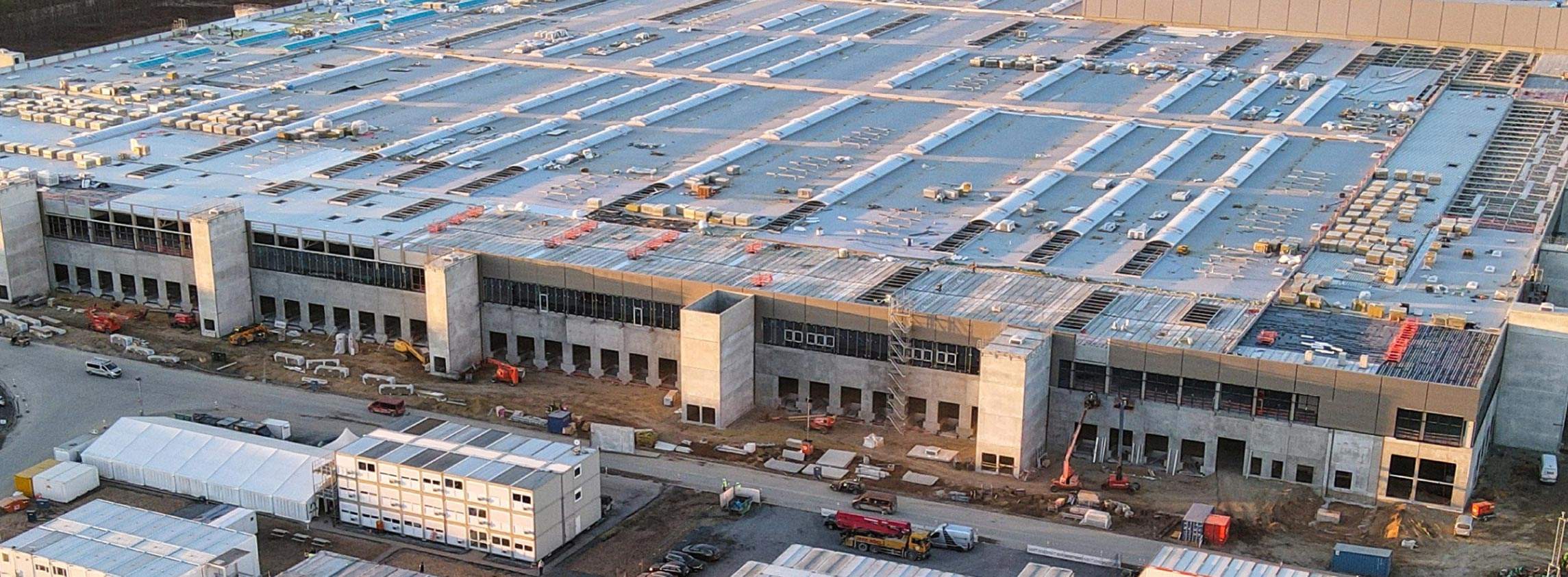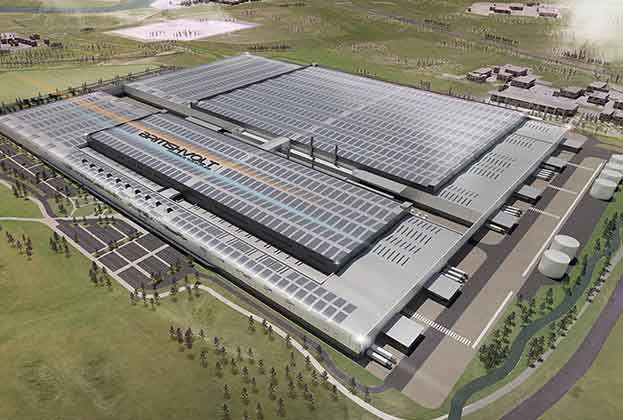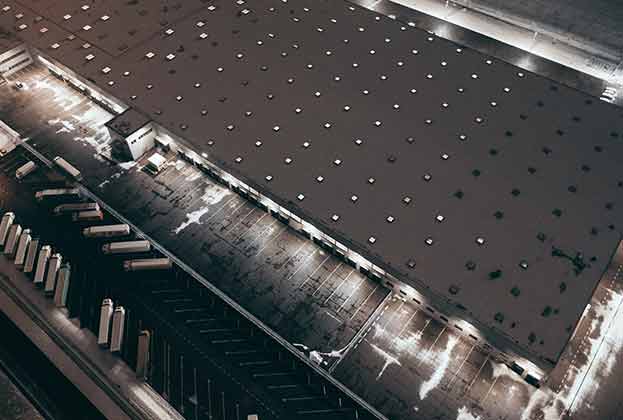What are the real estate implications of Gigafactory development in the UK?
Whilst the term Gigafactory conjures up imagery of advanced manufacturing and hi-tech investment the real estate implications of such development have yet to be considered in great detail. In layman’s terms, Gigafactories should be considered as the engine plants of the future. As we have seen historically, where automotive manufacturers invested in engine manufacturing plants, demand for warehouse space in the locality increased dramatically from their suppliers as companies looked to implement just-in-time supply chains to support the manufacturing process.
In relation to Gigafactory buildings themselves, it is important to first consider their real estate requirement before establishing the locations that could be matched to that demand.
The plot thickens
Firstly there is the sheer scale of the building required. Estimates range between a building of between 2–3m sq ft in terms of footprint. By way of comparison, the initial Tesla building in Nevada has a footprint of 1.9m sq ft on a building plot of c.230 acres, whereas phase 1 of the under-construction facility in Berlin will house a building close to 600,000 sq ft on a plot of 376 acres. Tesla has, however, purchased 740 acres in total and expects to roll out developments in phases as production increases.
Britishvolt, a UK battery manufacturing start-up, has committed to a site of 235 acres in Blyth that will house 2.75m sq ft of manufacturing space. Whilst financing obstacles still exist for the construction of this building if it does come to fruition, over a phased period of development, it would be the largest building by footprint in the UK. Whilst some manufacturing sites from current automotive manufacturers such as JLR, Toyota and Nissan range between 3–5m sq ft in total, these are much more akin to campus-style developments with interconnected buildings rather than one unit.
Given the fact that Gigafactory buildings will be designed to be a single unit rather than a campus-style development site, topology is also a critical factor. Given the expense of remediating sites and creating plateaus on undulating sites, it is important that, generally speaking, the terrain is predominantly flat in the first place.
A further key consideration is the availability of power to the site. Whilst estimates range, figures of a power draw of 150MVA for a unit of 2m sq ft have largely been accepted.
If we put this into context when compared with other warehouse and industrial developments, it is clear that the energy required to support battery production is vast. By way of comparison, a fully automated frozen cold store facility of around half a million sq ft would be expected to draw on c.5MVA which is also similar to a multi-level automated Amazon Customer Fulfilment Centre.
Property investors and developers should also take note that, Tesla aside, many companies operating in this arena are effectively start-ups. This brings into question concerns about covenant strength, but also the ability to pay for industrial land at today’s retail prices. In order to facilitate development, it is highly likely that land needs to be sourced in cheaper locations or that the public sector can intervene and structure deals to provide land in more cost-effective ways.
Taking aside the real estate requirements, another key factor when choosing to locate a Gigafactory is the availability of skilled labour. Press reports regarding the announcement that Britishvolt plan to construct a Gigafactory in the North East suggest that 3,000 direct jobs will be created, with a further 5,000 roles within the wider supply chain.
If we compare this with other Gigafactory deployments around the world, it could be argued that even more jobs will be created with Tesla Nevada directly employing over 10,000 people and Tesla Berlin expected to employ 12,000. And whilst many of these roles will be focussed on the production line of cars and batteries, many of the roles cover robotics, automation, data analytics and other maintenance roles.
Planning issues
Taking into account all of the variables around scale, topology, energy usage, land price and labour availability and undertaking a filtering exercise, it becomes clear that there are very few markets where the Venn diagram aligns that would make the development of Gigafactories in the short term possible.
However, former industrial areas where local authorities have a vested interest in promoting regeneration of brownfield sites would rise to the top of any hierarchy when considering new locations. It is for these reasons that areas such as the North East and South Wales regularly appear when requirements for battery plants are released.
Given the West Midlands, in particular, has a strong automotive tradition, along with a significant amount of existing automotive infrastructure, including R&D, engine plants and manufacturing, it is not unreasonable to suggest that a Gigafactory could be constructed in the region.
With that in mind, the mayor of the West Midlands, Andy Street, has supported proposals to deliver a site in Coventry that could be used for battery production in the future. Whilst the site delivers on many of the variables already mentioned in this paper, it also highlights a further constraint to development, namely the planning system.
Proposed developments which incur green belt release are often contentious and expensive
Kevin Mofid, Director, Commercial Research
Under the use-class order, any battery production facility would be classified as a B2 development and due consideration would need to be given to factors such as noise, emissions, air quality, traffic movements and the scale and massing of the building.
The proposed site in the West Midlands is currently also classified as green belt. As the wider industrial and logistics property market has already witnessed, proposed developments that incur green belt release are often contentious, time-consuming and expensive.
It remains to be seen how any such planning issues could be addressed in a timely fashion if the UK is to increase battery production as quickly as it needs to.
One possible solution, given the scale of development, is that any scheme is likely to be classified as a Nationally Significant Infrastructure Project. This opens up the option of a Development Consent Order, which provides multiple approvals, compulsory acquisition powers and has a high success rate.
.jpg)
What makes a good site for a Gigafactory?
As the world moves towards a zero emissions future, the electrification of the automotive industry will have a key role to play. The next decade is crucial in building the infrastructure that allows us to manufacture batteries at scale and ensure that the UK automotive industry remains competitive. Since our company was formed in 2019, Britishvolt has been searching for sites that will allow us to play a key role in that zero emissions future.
We were awarded planning permission in July 2021 for our first Gigaplant development, a circa 2.8m sq ft facility on a 238-acre site. Construction commenced in September 2021, and we are on course for the first phase of this facility to be completed by the end of 2023. It’s interesting to discuss the site selection criteria that led us here in the first place.
The first key parameter is the availability of energy, not just a plentiful supply, but also from renewable sources. The provision of certifiably clean and green power at a rate in line with comparable European markets is vital in establishing a competitive advantage for battery manufacturing in the UK.
In order to manufacture at the scale we intend to, we need an energy supply of at least 225MVA. There are very few sites in the UK that have access to such a supply in the first instance, and even fewer sites that can provide that from renewable sources. At our Cambois site in the North East, we can take advantage of a number of renewable energy sources; 1.3 GW of energy produced from hydroelectric sources, our own 28MW rooftop solar array, along with significant offshore wind being bought to the area that is yet to be quantified. This allows us to drive C02 out of our manufacturing processes and create a truly competitive product.
The second key factor is the deliverability of the site. Whilst there are sites that we examined that may have ultimately been suitable; how soon could we realistically be operational? Many sites may be in myriad ownership, have planning restrictions such as being in the green belt, or have other restrictions, such as the timescales National Grid need to deliver an electricity connection of the scale we need, which ultimately means development will take longer than five years to achieve.
Coupled with the above is the cost associated with purchasing land for such development. Many areas of the UK have seen industrial land values rise dramatically in the last five years. For a business like ours, which is still in a start-up phase, our ability to compete on the open market and pay the land values that traditional warehouse developers can afford to pay would ultimately jeopardise the future success of our operations.
Lastly, but by no means least, we also need a large supply of skilled labour. We plan to create around 3,000 high-quality jobs in the North East with many more being created within our wider supply chain.
From our experience and extensive work to find suitable sites in the UK, it will not be a straightforward process to bring forward sites for development for Gigafactory use. Our site in the North East brings together all of these key factors and we see it as the premier site for battery manufacturing and EV development in the UK.
Peter Rolton, Chairman and UK CEO, Britishvolt
Read the articles within Spotlight: Gigafactories below.


